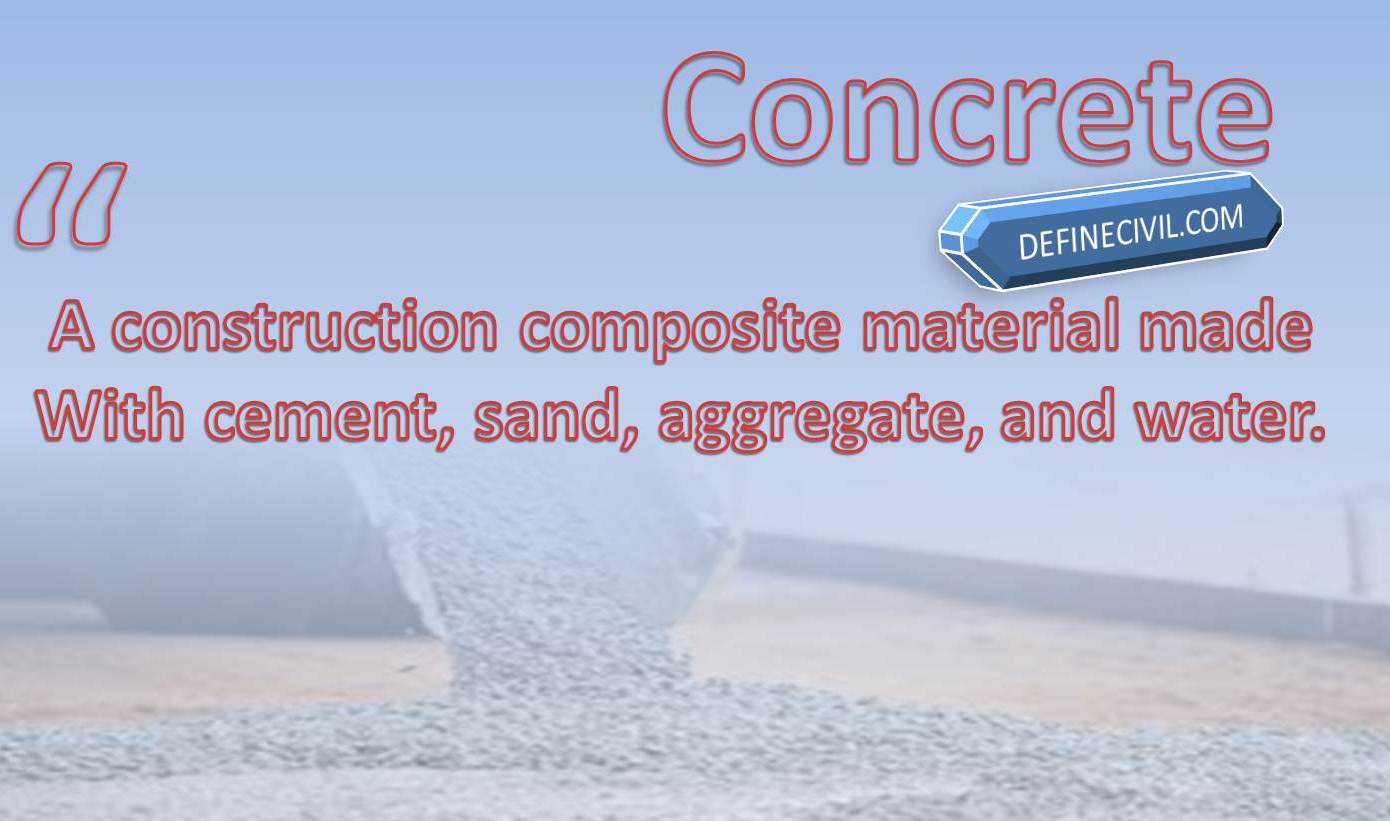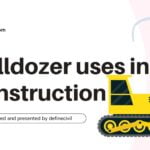So, you’re one of the future constructors and are wondering what is concrete definition in civil engineering. Well, in simple terms, concrete is a composite material or a mixture of fine and coarse aggregate that is bonded together by cement paste.
The aggregate – both fine and coarse, are termed as filler content while the cement is referred to as the cementitious or binder material. You might already know about Portland cement and its properties. Cement when mixed with water, and as a result of a hydration reaction, sets and hardens that further adheres to other materials and binds them together. Now in case of concrete it binds the coarse and fine aggregate to produce a solid mass defined as concrete.

Before moving ahead, bookmark this page because it contains a whole lot of information about concrete. This page will be pretty helpful for you while working in the field.
Concrete Definition
Concrete is a well-known and widely used construction material. Like other materials timber, steel, stone, aluminum, and composite material; concrete do have its own pros and cons.
One of the biggest pro of concrete is its ability to take any shape or form you require for the project, while in a plastic state. Hence, we see concrete for foundations, columns, beams, slabs, and even dams. The binder content or cement can be of any type or category. Even in some specific cases we use cementitious materials like slag. Some basic types of cement used beside ordinary Portland cement are: Portland Pozzolana cement, rapid hardening cement, low-heat cement, sulfate-resisting cement, or quick setting cement.
The type of binder material used in concrete will have a huge impact on the overall properties of concrete. So, you should carefully select the type of cement in mix design of concrete. You have to keep in mind the field requirements like workability, compressive strength, shrinkage, and even durability.
Components of Concrete
- Cement
The most important component of concrete is cement. It influences the most important aspects of concrete mix including its strength. It acts like a glue and binds the concrete together as a solid mass.
- Coarse and fine aggregate
The next component of concrete is gravel or coarse aggregate. It acts like filler that make concrete strong and economical. Another filler component is fine aggregate.
- Water
Water is also a key ingredient in the concrete mix that allows it take a shape of a paste and binds together the filler material. It initiates the hardening of concrete as a result of hydration reaction and is the reason of making mix workable and easy to pour.
The amount of water in the mix design is specified by a term called water-cement ratio. It is the ratio between the amount of water and the cement in the mix. A lower water-cement ratio will increase the strength and durability of concrete but such a mix is difficult to work with and you may find problems like honeycombing.
[su_box title=”Don’t Forget to Read this article” style=”glass” box_color=”#f64420″]Learn more about water cement ratio and its impact on concrete in this article here: Water cement ratio[/su_box]
- Admixtures
It is rather an optional ingredient of concrete. They are in fact natural or manufactured chemicals or additives that are mixed in concrete to generate some specific benefits of properties. The most common admixtures are retarders and accelerators they tend of adjust the rate of hydration reaction as per the field requirements. Air entertainers are also used to increase the air content and durability of the concrete. Some other admixtures are superplasticizers and water reducers.
What is concrete grade?
The concrete in a project is specified by its grade. The grade denotes the compressive strength of the concrete. A concrete with grade 20 like M20 would mean that the compressive strength of the concrete is 20Mpa. In M20, M means the mix it can take any alphabet from A to Z for identification of the mix while the 20 is the compressive strength in Mpa. For example, a C30 concrete mix would mean that the mix design C is required to have a concrete compressive strength of 30 Mpa.
As a general rule for mix design we present the concrete as ratios. For example a mix of 1:1.5:3 would mean that the mix has 1 portion of cement, 1.5 portion of sand and 3 portion of coarse aggregate. The batch can be made either on the basis of volume or weight that depends on the project specification. In most of the cases, the batch is made by weight.



















